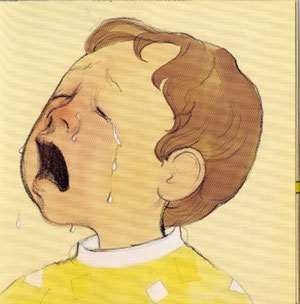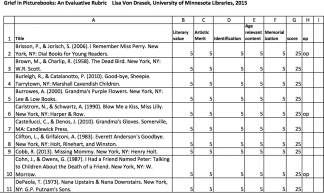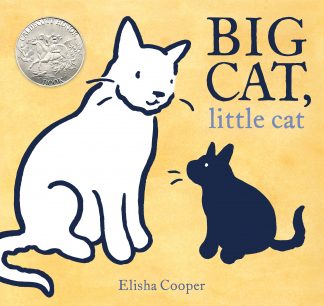It’s OK to cry when someone you like very much has died.
— Pat Brisson and Stéphane Jorisch, I Remember Miss Perry

From Goodbye Mousie by Robie H. Harris. Used with permission.
At the Educational Books and Media Association Conference, our panel was asked, “What is the most requested topic of children’s books by parents?” The panelists agreed that death and grieving was the leading theme in these reference quests.
In Children and Libraries, I published an examination of death and grief in ninety-two picturebooks for young children, pre-school/early elementary, considering the content with regards to child development producing a rubric for evaluation. I focussed on artistic merit, literary merit, and child development. Grief in Picture Books: An Evaluative Rubric
Article in Children and Libraries.

Every young child experiences loss. From the first time her mother leaves the room, a typically developing child has no framework to process what Piaget has labeled “object permanence.” Mothers or fathers who have removed themselves physically from the sight of a baby have disappeared. Thus we witness the inconsolable sobbing child at daycare drop-off whose parent is “gone!”
As children develop cognitively, their concept of death evolves. The preschool child perceives death as temporary. They may ask when grandma will be visiting again even after being informed numerous times that she had died.
Recommending Titles
We often are asked to recommend titles to help children cope with the big feelings surrounding life events like the first day at school, visiting the hospital, or dealing with traumatic events like death. Bibliotherapy, or the use of words and literature for therapeutic purposes, has been theorized and empirically suggested to aid in emotional expression, positive coping, meaning-making, and healing.
Troy Pinkney-Ragsdale, director of Child Life Program at the Bank Street College of Education, trains teachers who work with children and their families. Child Life Specialists work in hospital or rehabilitation settings with residential children and their families. Their work has demonstrated the value of sharing picturebooks with children to help cope with the difficult concept of death and the associated feelings of grief.
Pinkney-Ragsdale emphasized, “Bibliotherapy is an engaging, nonthreatening, and accessible tool to support children and families experiencing loss and grief. The written word can be used by both professionals and families alike as a door into the child’s world.
Looking at Big Cat, Little Cat
t
Through the Lens of This Rubric.
Summary- a black kitten joins the home of a white cat. The big white cat teaches the little black cat, “what to do, when to eat,where to go…”
Literary Value
Not everyone who is selecting books for the library has the opportunity to hold it in their hand. This is where reviews help us in collection development.
A gentle, loving look at the life cycle of pets….
— School Library Journal ★ Starred Review
The quiet and minimal storytelling is absolutely cat, soft and flexible and present….
— BCCB, ★ Starred Review
With quiet grace, Cooper delivers the message that love persists through loss.
— Publishers Weekly, ★ Starred Review
Cooper’s gentle tale of the loss of a feline friend is perfect bibliotherapy for those who have lost a loved pet. A hard book to read for anyone who has lost a feline family member but a heart-healing message all the same.-Kirkus ★ (Picture book. 3-8)
Cooper’s thick black lines produce figures full of kinetic energy and personality. The circular nature of the story is beautifully reinforced by the repetition in both art and text, and the result is at once realistic and comforting.
— Horn Book, ★ Starred Review
Artistic Merit
The book won a Caldecott Honor. It is safe to say that it is notable in its artistic merit.
His deceptively simple, fluid black-and-white line drawings bring all aspects of cat life to the page. And the subtle background colors of selected spreads—yellow for happy times, gray for sad—effectively convey the emotions. — Kirkus ★ Starred Review
Identification and Age Relevant Content
Children who have experienced loving a pet will identify with the experience of a kitten growing and learning. Children who have or maybe experiencing the death of a pet and/or the aging and failing-to-thrive pet will find the content relevant to their development and to their experience of death and grief.
Memorialization
The story itself memorializes the life of the big white cat as it also depicts the cycle of life.
Further Reading
Lifecycle of a Book by Elisha Cooper is his description of the creative process in creating Big Cat, Little Cat.
When Elisha Cooper Heard The News




